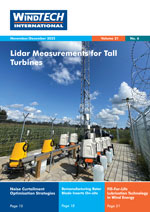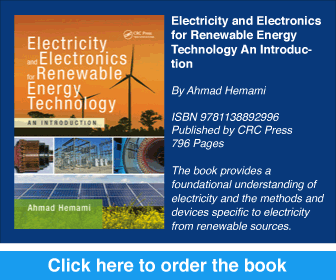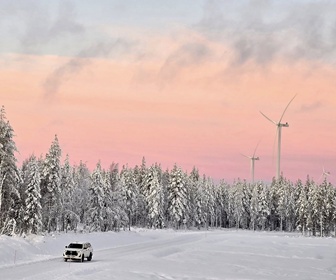 In engineering it is well known that larger units of a machine or equipment are better than smaller units from both economical and efficiency viewpoints. For instance, a 1000MW steam turbine is more efficient than two 500MW turbines and certainly better than ten 100MW units. By the same token, for travelling across continents, a jumbo jet is a preferred choice for an airliner, compared to two smaller planes of half capacity. This is why we see, in the case of wind turbines, that manufacturers have been continuously working on making their turbines larger, now in the neighbourhood of 20MW.
In engineering it is well known that larger units of a machine or equipment are better than smaller units from both economical and efficiency viewpoints. For instance, a 1000MW steam turbine is more efficient than two 500MW turbines and certainly better than ten 100MW units. By the same token, for travelling across continents, a jumbo jet is a preferred choice for an airliner, compared to two smaller planes of half capacity. This is why we see, in the case of wind turbines, that manufacturers have been continuously working on making their turbines larger, now in the neighbourhood of 20MW.
By Ahmad Hemami, McGill University, Montreal, Canada
There are many ideas about how wind energy can be captured. One can find some of them by surfing the internet, where a lot of (useless) gadgets can be found there, too. However, as I teach in my course on wind turbines, not anything that rotates or moves with wind can be used as a wind turbine. There are numerous wind sculptures that when the wind blows they turn and create interesting patterns. But at an industrial and commercial level, none can be considered a candidate for generating electricity.
The most ridiculous idea that I have heard of was using the motion of the leaves of trees to generate electricity. Probably the idea was from someone without knowledge of electricity and what is involved in the process of providing electricity to cities.
Other ideas are not so much away from reality, but still not worth it from the viewpoint of commercial electricity generation. Among these ideas, just to mention a few, is installing a number of Savonius rotors (you can imagine how many for 1 MW, if each unit is maximum 100 W) at the side of a highway. They get their energy from the wind produced by the moving vehicles!
Another example is the vibrating rods. The free end of a rod of 6- 8 metres long, vertically installed on the ground can vibrate with the wind flow. With a special generator this motion can be converted to electricity. I assume the output power of such an arrangement, taking the efficiency into consideration, will not be more than 60 W. In reality, this is not more than a toy. Nowadays, we are talking about 20MW wind turbines!
The idea of flying wind turbines [1] is one that can be added to the list. Consider a plane that flies; the reason it does not fall is that it is moving fast, such that the lift forces on its wings counteract the weight. If a wind turbine is treated as a kite, so that it can fly with the wind to its desired position/height, it must be really very small. And always it must be brought to the ground when there is not wind. This must be done BEFORE it drops to the ground when the wind speed decreases. A major question here is the power output. If it’s around 60- 80W, then it falls into the same category as the previous examples.
The idea of flying wind turbines is not new, as is shown below. The fact is that it is always the relative wind that counts, meaning that the turbine itself must be on a relatively fixed support; otherwise a turbine can fly with the wind. In the above case, part of the energy from wind is to keep the turbine in the air, and the rest is what can be harnessed.
Up in the atmosphere there are some strong winds blowing from west to east, called jet streams. These are steady winds with high speed, ideal for a wind turbine. Jet stream has been used to send materials across the continents by ballons, in the past. Jet stream winds blow about 10.000 metres above ground. This is the height that large commercial airplanes fly.
Around 15 years ago the idea of using jet stream winds for wind turbines had passed through the minds of some people, who received government funding for pursuing some study on the subject. This is an idea that I would not spend a penny on. Looking realistically at the matter, how can a 10 kilometres harness from a point on the ground keep the wind turbine in place, and in what way is it logical that a 10 kilometres cable coming down from the sky, brings electricity to the ground? What happens to airplanes suddenly facing a near-vertical cable/chain? How to maintain the elevation of the turbine (it can come down)? There are more questions that need answers but let us leave it here.
Further Reading
- Christoph Drexel, “Flying Wind Turbines”, Windtech International, Vol. 20, No 6, Nov.-Dec. 2024










